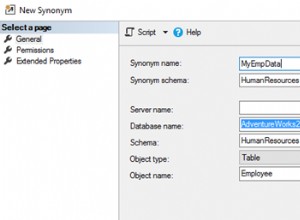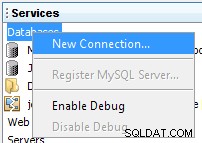Jakiś czas temu napisałem odpowiedź na podobne pytanie:Jak znaleźć wszystkie połączone podwykresy grafu nieskierowanego . W tym pytaniu użyłem SQL Server. Zobacz tę odpowiedź, aby uzyskać szczegółowe wyjaśnienie pośrednich CTE. Zaadaptowałem to zapytanie do Postgresa.
Można go napisać wydajniej za pomocą funkcji tablicy Postgres zamiast łączenia ścieżki w text kolumna.
WITH RECURSIVE
CTE_Idents
AS
(
SELECT old AS Ident
FROM identities
UNION
SELECT new AS Ident
FROM identities
)
,CTE_Pairs
AS
(
SELECT old AS Ident1, new AS Ident2
FROM identities
WHERE old <> new
UNION
SELECT new AS Ident1, old AS Ident2
FROM identities
WHERE old <> new
)
,CTE_Recursive
AS
(
SELECT
CTE_Idents.Ident AS AnchorIdent
, Ident1
, Ident2
, ',' || Ident1 || ',' || Ident2 || ',' AS IdentPath
, 1 AS Lvl
FROM
CTE_Pairs
INNER JOIN CTE_Idents ON CTE_Idents.Ident = CTE_Pairs.Ident1
UNION ALL
SELECT
CTE_Recursive.AnchorIdent
, CTE_Pairs.Ident1
, CTE_Pairs.Ident2
, CTE_Recursive.IdentPath || CTE_Pairs.Ident2 || ',' AS IdentPath
, CTE_Recursive.Lvl + 1 AS Lvl
FROM
CTE_Pairs
INNER JOIN CTE_Recursive ON CTE_Recursive.Ident2 = CTE_Pairs.Ident1
WHERE
CTE_Recursive.IdentPath NOT LIKE ('%,' || CTE_Pairs.Ident2 || ',%')
)
,CTE_RecursionResult
AS
(
SELECT AnchorIdent, Ident1, Ident2
FROM CTE_Recursive
)
,CTE_CleanResult
AS
(
SELECT AnchorIdent, Ident1 AS Ident
FROM CTE_RecursionResult
UNION
SELECT AnchorIdent, Ident2 AS Ident
FROM CTE_RecursionResult
)
,CTE_Groups
AS
(
SELECT
CTE_Idents.Ident
,array_agg(COALESCE(CTE_CleanResult.Ident, CTE_Idents.Ident)
ORDER BY COALESCE(CTE_CleanResult.Ident, CTE_Idents.Ident)) AS AllIdents
FROM
CTE_Idents
LEFT JOIN CTE_CleanResult ON CTE_CleanResult.AnchorIdent = CTE_Idents.Ident
GROUP BY CTE_Idents.Ident
)
SELECT AllIdents
FROM CTE_Groups
GROUP BY AllIdents
;
Dodałem jeden wiersz (7,X,Y) do przykładowych danych.
Wynik
| allidents |
|--------------------|
| Lydia,Mary,Nancy |
| Albert,Bob,Charles |
| X,Y |
| Zoe |




